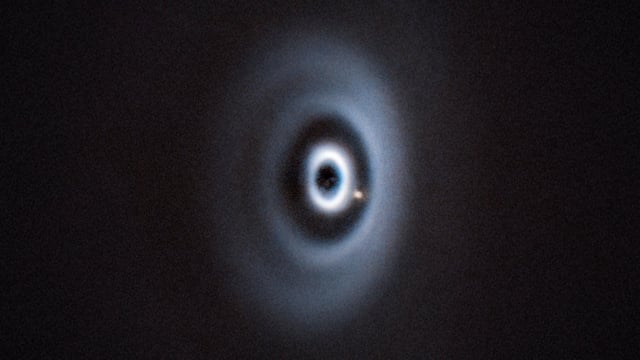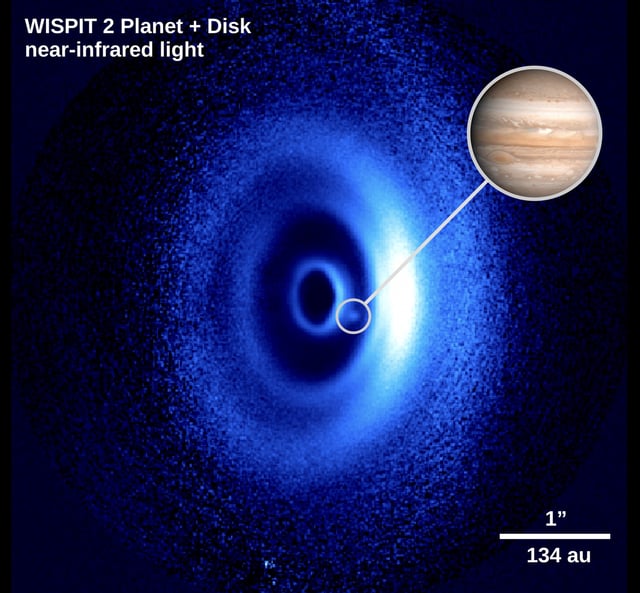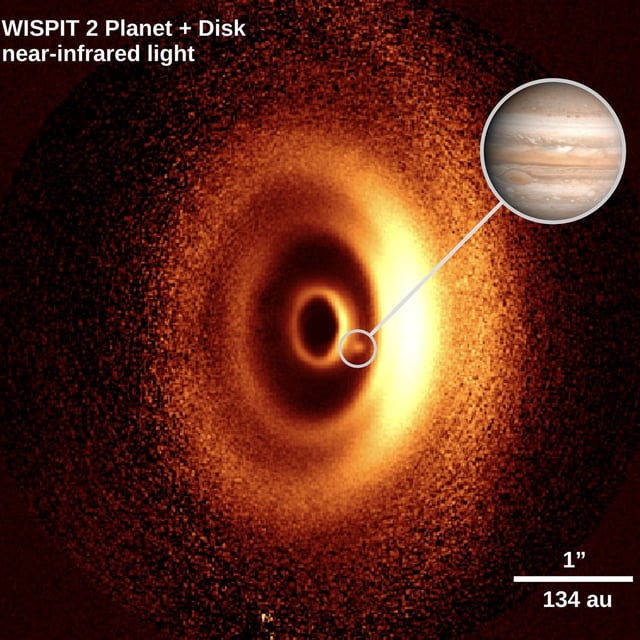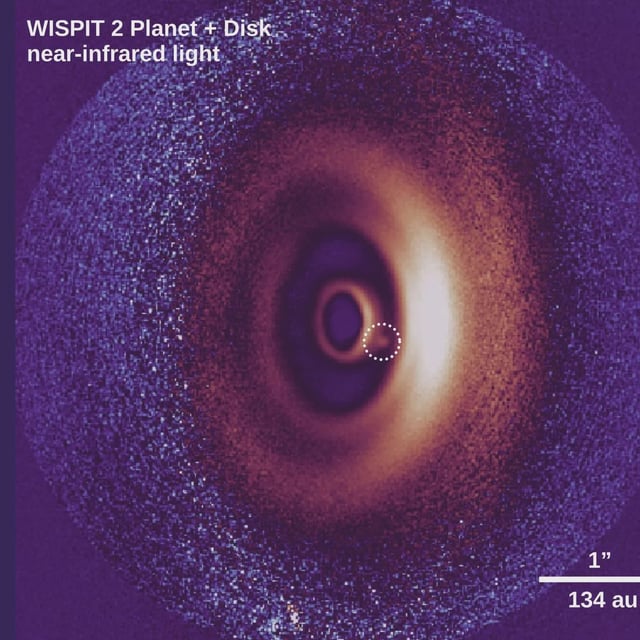Overview
- Peer-reviewed papers in Astrophysical Journal Letters report WISPIT 2b as the first unambiguous planet found inside a multi-ringed disk and only the second confirmed at such an early stage around a Sun analog.
- Near-infrared imaging with ESO’s Very Large Telescope revealed the planet in a disk gap, while MagAO-X on Magellan detected H-alpha emission and the Large Binocular Telescope captured thermal infrared light, indicating active gas accretion.
- The protoplanet is about five million years old with an estimated mass near five times that of Jupiter, consistent with a young, still-forming gas giant.
- Located roughly 430 light-years away in the direction of Aquila, the system’s disk spans about 380 astronomical units, with WISPIT 2b orbiting near 56 AU inside a cleared ring.
- Researchers also report an inner candidate, dubbed CC1, at roughly nine Jupiter masses, and follow-up observations are underway to refine orbital and mass estimates.



